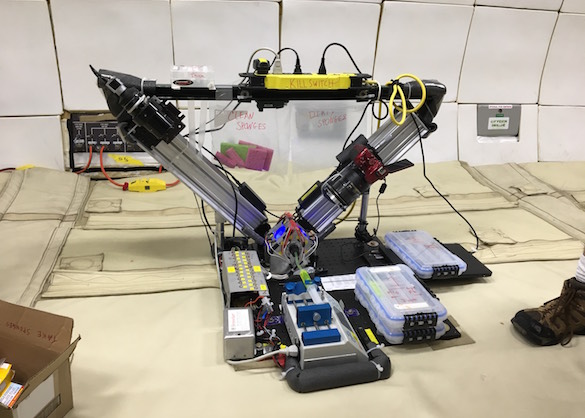Droplet Pinning in Microgravity
PI: Amir Hirsa, Rensselaer Polytechnic Institute
PI: Amir Hirsa, Rensselaer Polytechnic Institute

- TA06 Human Health, Life Support and Habitation Systems
Amyloid formation has been extensively researched with the conclusion that both shear and interfacial forces can play critical roles in its initiation and development. However, the relative contributions of bulk and interfacial effects have not been elucidated as these two effects have been invariably coupled in previous experiments. Experimentation in an environment where container walls are eliminated may accelerate model development. The RSD project therefore takes advantage of microgravity aboard the ISS to create a flow geometry in which protein solution is contained by surface tension and pinned by a pair of thin rings.
The RSD project seeks to decouple bulk, interfacial, and flow phenomena from one another as much as possible using Earth-based analogous experiments in combination with RSD experiments onboard the ISS in microgravity. Parabolic flight testing aims to demonstrate the payload as well as collect design data to ensure success of the RSD module aboard the ISS. Parabolic flight testing provides a proof-of-concept for the coatings, geometries, and procedures developed for pinning drops in microgravity.
NASA
Technology Details
-
Selection DateREDDI-F1-14 (Apr 2015)
-
Program StatusCompleted
- 1 Parabolic
Development Team
-
PIAmir Hirsa
-
Organization
-
SponsorNASA

